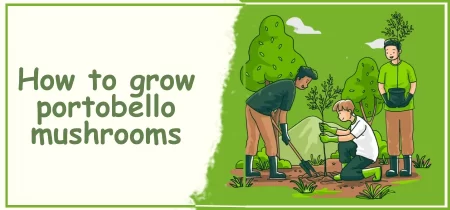Harvesting mint leaves is a rewarding and aromatic endeavor that allows you to enjoy this versatile herb’s fresh flavors and fragrances. Whether you plan to use mint in culinary creations, beverages, or herbal remedies, knowing the art of harvesting is essential to ensure optimal flavor and quality.
In this comprehensive guide, we will explore the various aspects of harvesting mint leaves, including identifying the optimal time for harvesting, essential tools, and equipment, a step-by-step guide, best practices for maximizing your harvest, the benefits and uses of fresh mint leaves, troubleshooting common issues, and conclude with valuable insights.
So, let’s dive into the world of mint harvesting and unlock its delightful potential.
Identifying the Optimal Time for Harvesting:
Harvesting mint leaves at the right time is crucial to capture their peak flavor and aroma. Here are five ways to identify the optimal time for harvesting:
- Leaf Development: Observe the mint plant closely and look for well-developed leaves. Mature leaves are typically vibrant green, and plump, and exhibit a rich aroma.
- Time of Day: Harvest mint leaves in the morning, preferably after the dew has evaporated. During this time, the essential oils responsible for mint’s distinctive flavor are at their highest concentration.
- Pre-Flowering Stage: Harvest mint leaves just before the plant begins to flower. At this stage, the leaves contain the maximum essential oil content, ensuring a robust flavor profile.
- Leaf Size: Opt for leaves that are of medium to large size. Smaller leaves may not possess the desired flavor intensity, while overly large leaves can sometimes be more challenging and less flavorful.
- Seasonal Considerations: Mint can be harvested throughout the growing season but during its peak growth phase for the most vibrant flavors. This is usually during mid to late summer when the plant is lush and thriving.
Essential Tools and Equipment:
To embark on your mint harvesting journey, you’ll need a few essential tools and equipment:
- Pruning Shears: A pair of sharp pruning shears will enable you to make clean cuts when harvesting mint leaves. Look for shears with a bypass design for the precise and smooth cutting action.
- Gardening Gloves: Wear sturdy gardening gloves to protect your hands from scratches and irritations. This will ensure a comfortable and safe harvesting experience.
- Harvesting Basket or Container: Have a lightweight and spacious basket or container on hand to gather your freshly harvested mint leaves. Opt for one with ample ventilation to prevent moisture buildup.
- Water Spray Bottle: Mint leaves can benefit from gentle misting during harvesting to keep them fresh and hydrated. Use a water spray bottle for this purpose.
- Clean Cloth or Paper Towels: Keep a clean cloth or a stack of paper towels nearby to wipe off any dirt or debris from the harvested mint leaves before storage or immediate use.
Step-by-Step Guide to Harvesting Mint Leaves:
Follow these six simple steps to ensure a successful mint leaf harvest:
- Prepare Your Tools: Gather all the tools and equipment mentioned above before starting the harvesting process. Having everything ready will streamline your workflow.
- Choose the Right Stems: Identify healthy and robust stems with well-developed leaves. Avoid stems with yellowing or damaged foliage.
- Harvesting Technique: Position your pruning shears just above a set of leaves or nodes and make a clean, angled cut. This promotes new growth and maintains the plant’s shape.
- Prune selectively: Rather than harvesting the entire plant, selectively prune a few stems at a time. This allows the plant to continue growing and ensures a consistent supply of fresh leaves.
- Rinse and Dry: After harvesting, gently rinse the mint leaves with cold water to remove any dirt or insects. Pat them dry with a clean cloth or paper towel.
- Storage Options: Depending on your immediate needs, you can store the mint leaves in airtight containers in the refrigerator for short-term use or consider drying them for long-term preservation.
Best Practices for Maximizing Mint Harvest:
To maximize your mint harvest and keep your plants thriving, consider the following practices:
- Regular Pruning: Trim your mint plants regularly to encourage bushier growth and prevent them from becoming overly leggy. Pruning also ensures a steady supply of fresh leaves throughout the growing season.
- Adequate Sunlight: Mint thrives in partial shade to full sun. Ensure that your mint plants receive at least 4-6 hours of direct sunlight daily for optimal growth and flavor development.
- Moisture Management: Mint prefers consistently moist soil, so water your plants regularly to keep the soil evenly moist. Avoid waterlogging, as excessive moisture can lead to root rot.
- Fertilization: Provide your mint plants with regular doses of organic fertilizer to ensure they receive the nutrients for healthy growth. Use a balanced fertilizer formulated for herbs or apply compost around the base of the plants.
- Controlling Spread: Mint tends to spread rapidly and can become invasive if left unchecked. Consider planting mint in containers or using barriers to contain its growth and prevent it from taking over your garden.
Benefits and Uses of Fresh Mint Leaves:
In addition to their refreshing taste and aroma, fresh mint leaves offer several benefits and versatile uses. Here are six benefits of incorporating fresh mint leaves into your daily life:
- Digestive Aid: Mint leaves have long been used to soothe digestive issues such as indigestion, bloating, and stomach cramps. The natural compounds in mint help relax the gastrointestinal tract muscles, promoting healthy digestion.
- Breath Freshener: Mint’s cool and refreshing flavor makes it a natural breath freshener. Chewing on fresh mint leaves can help freshen your breath and mask unpleasant odors.
- Aromatherapy and Relaxation: The aroma of mint has a calming effect on the mind and body. Inhaling the scent of fresh mint leaves or using mint essential oil in diffusers or baths can promote relaxation and reduce stress.
- Culinary Versatility: Fresh mint leaves are a versatile ingredient in the kitchen. They add a refreshing twist to beverages, such as mojitos and herbal teas, and can enhance the flavor of sweet and savory dishes, including salads, desserts, and sauces.
- Skin Soothing: Mint leaves possess soothing properties that can help alleviate itching, irritation, and inflammation of the skin. Applying crushed mint leaves or mint-infused water topically can relieve insect bites, rashes, and minor skin irritations.
- Respiratory Support: The menthol content in mint leaves can help clear congestion and relieve respiratory ailments such as coughs, colds, and sinus congestion. Drinking mint tea or inhaling mint-infused steam can provide respiratory comfort.
Troubleshooting Common Mint Harvesting Issues:
While harvesting mint leaves can be a delightful experience, it’s essential to be aware of potential issues and how to troubleshoot them. Here are six common issues you may encounter:
- Fungal Diseases: Mint plants are susceptible to fungal diseases like powdery mildew and rust. To prevent these diseases, ensure proper air circulation, avoid overhead watering, and promptly remove infected leaves.
- Pest Infestations: Mint plants can attract pests such as aphids, spider mites, and caterpillars. Regularly inspect your plants and use organic pest control methods like neem oil or insecticidal soap.
- Nutrient Deficiencies: Mint plants require proper nutrition for healthy growth. Monitor your soil’s nutrient levels and adjust fertilization accordingly. Yellowing leaves or stunted growth may indicate nutrient deficiencies.
- Overwatering: Mint prefers moist soil but is susceptible to root rot if overwatered. Allow the top inch of soil to dry out before watering and ensure adequate drainage.
- Overcrowding: Mint plants tend to spread vigorously. Avoid overcrowding by regularly thinning out the plant and removing excess runners. This will promote better airflow and prevent the plants from competing for nutrients.
- Invasive Growth: Mint can quickly invade other areas of your garden if not contained. Consider planting mint in containers or using barriers to restrict its growth and prevent it from taking over neighboring plants.
Conclusion:
Harvesting mint leaves is a delightful and rewarding experience that allows you to enjoy this versatile herb’s fresh flavors and aromatic scents.
By identifying the optimal time for harvesting, equipping yourself with essential tools, following a step-by-step guide, implementing best practices, and troubleshooting common issues, you can ensure a successful mint harvest.
Embrace the benefits and uses of fresh mint leaves in your culinary creations, herbal remedies, and aromatherapy endeavors. With these insights in hand, you’re well-prepared to embark on your mint harvesting journey and savor the delightful flavors and aromas it brings to your life.




Leave a Reply